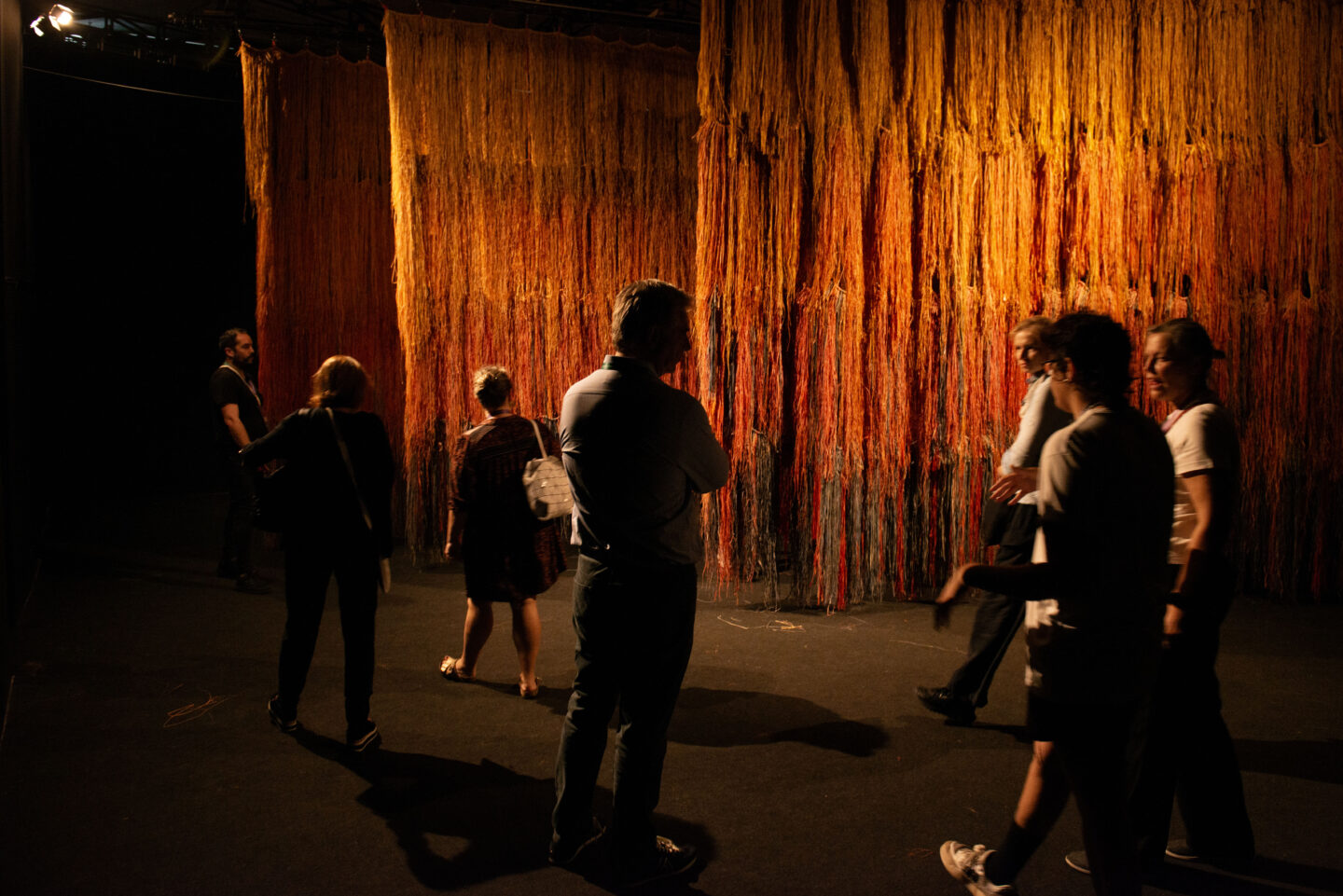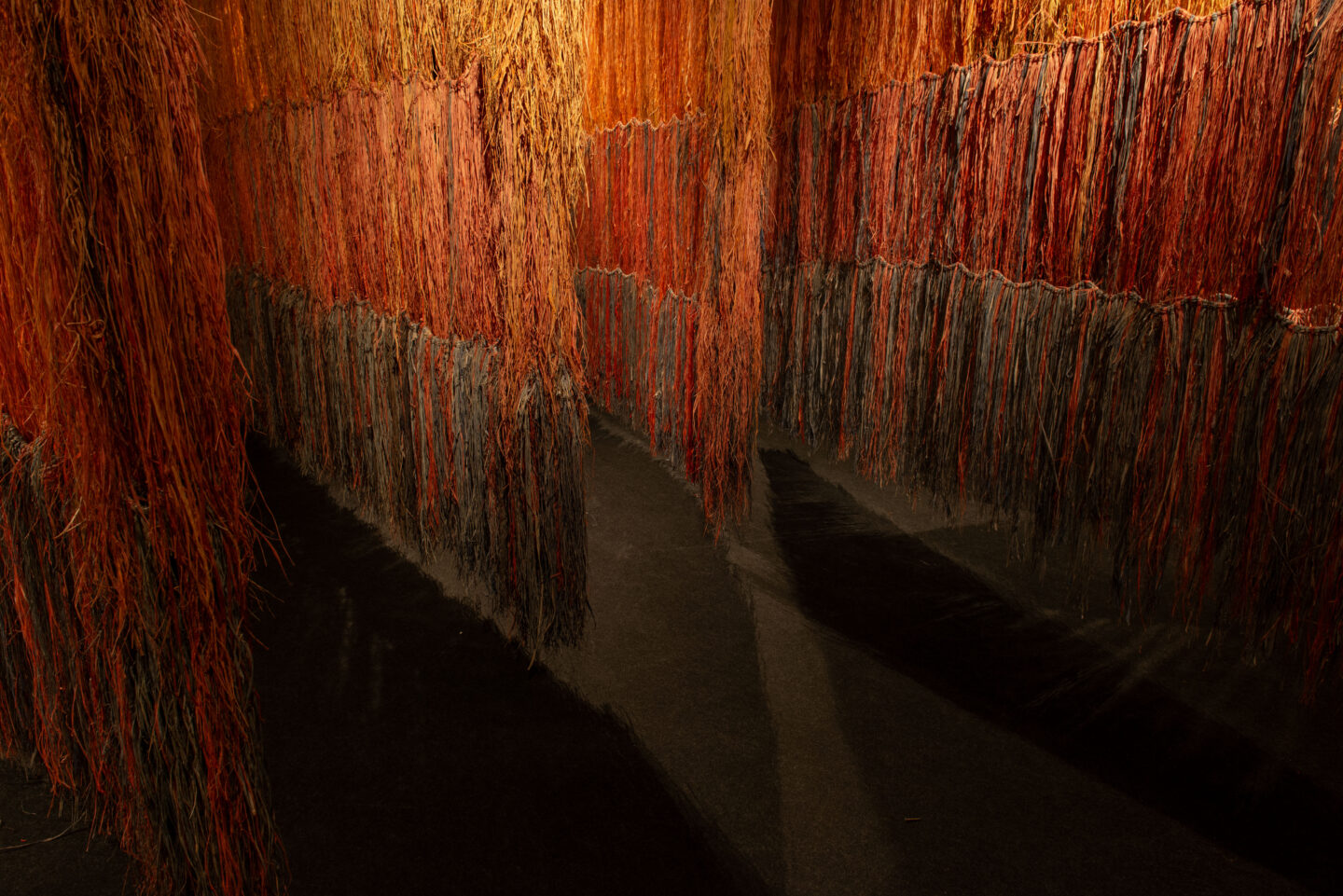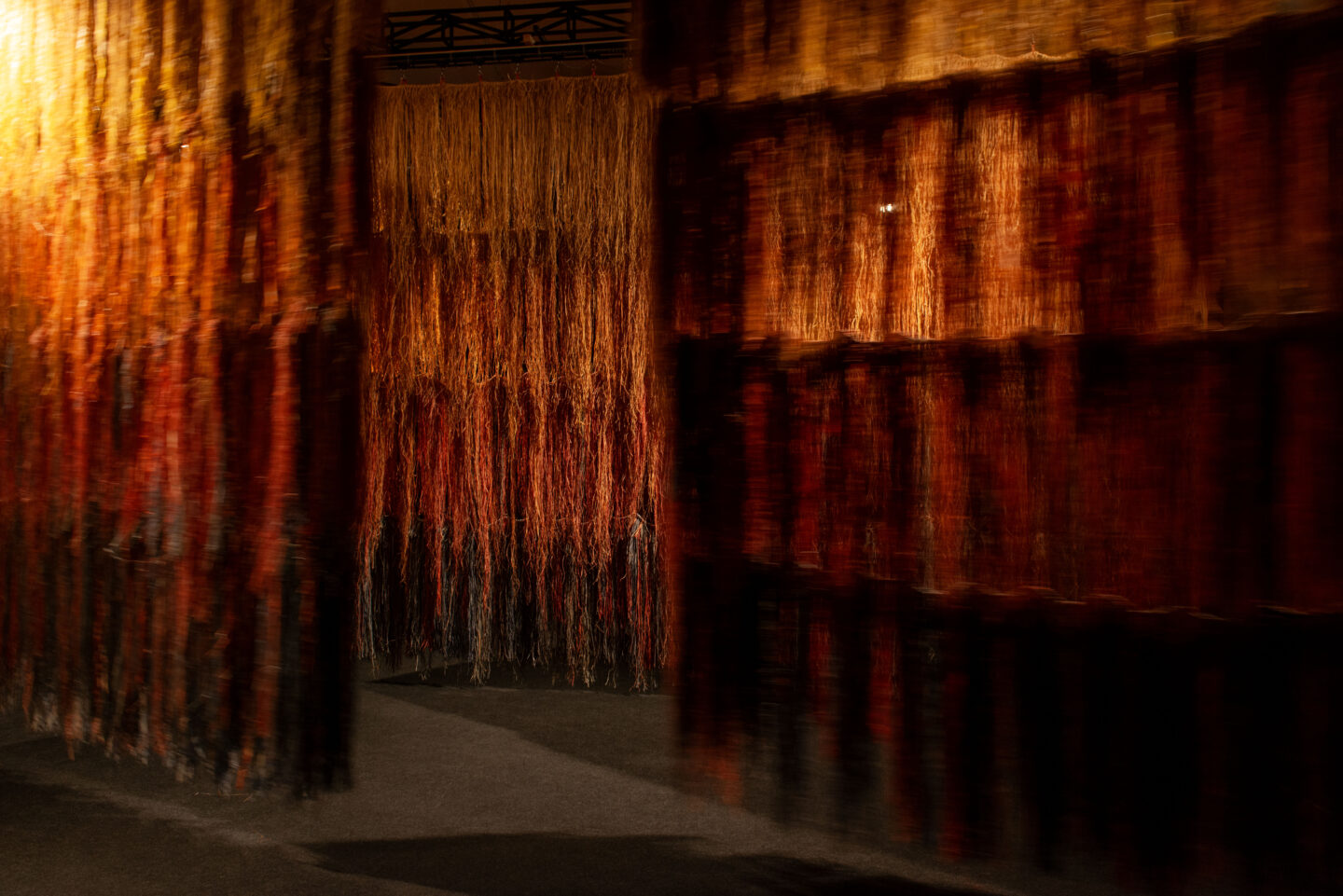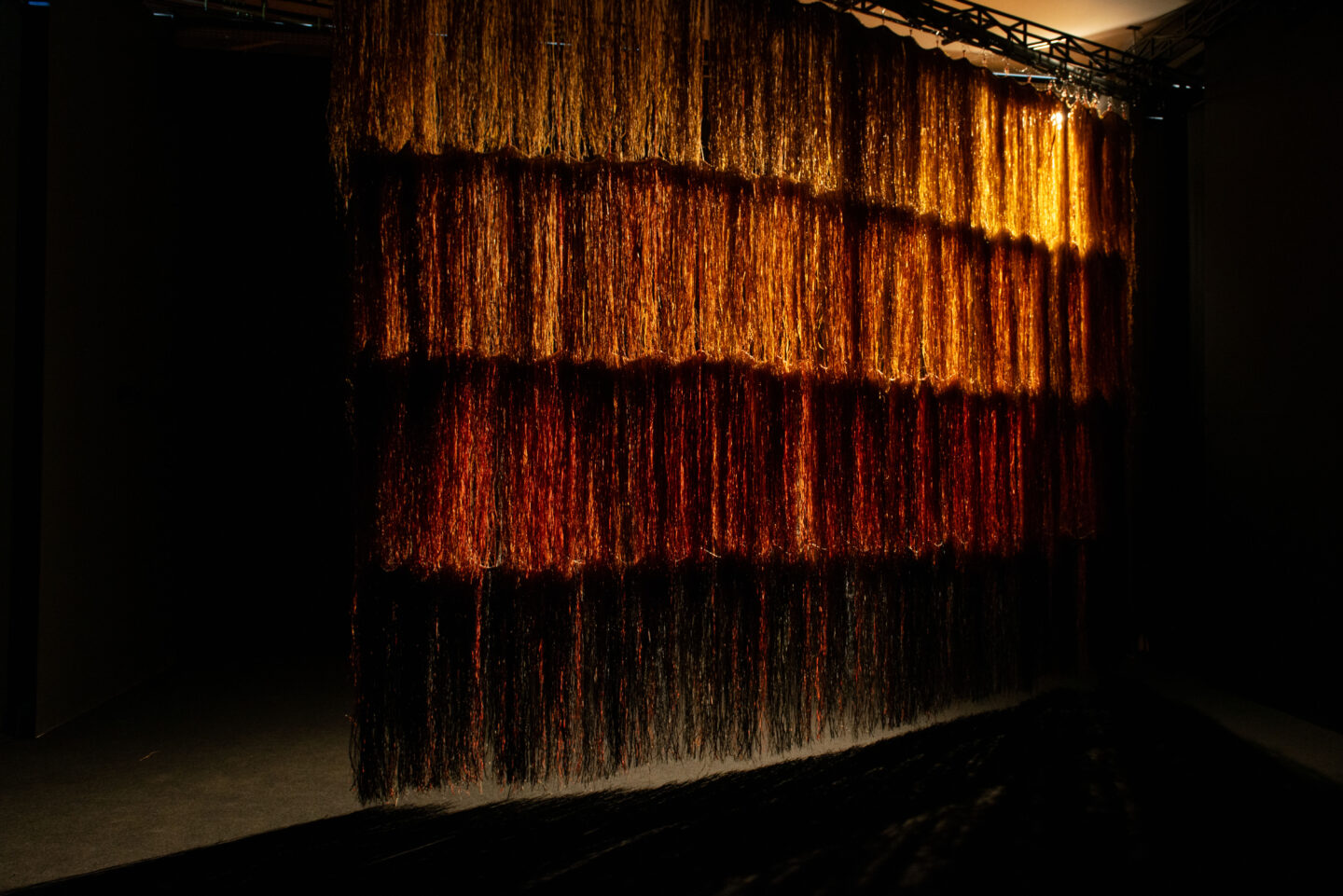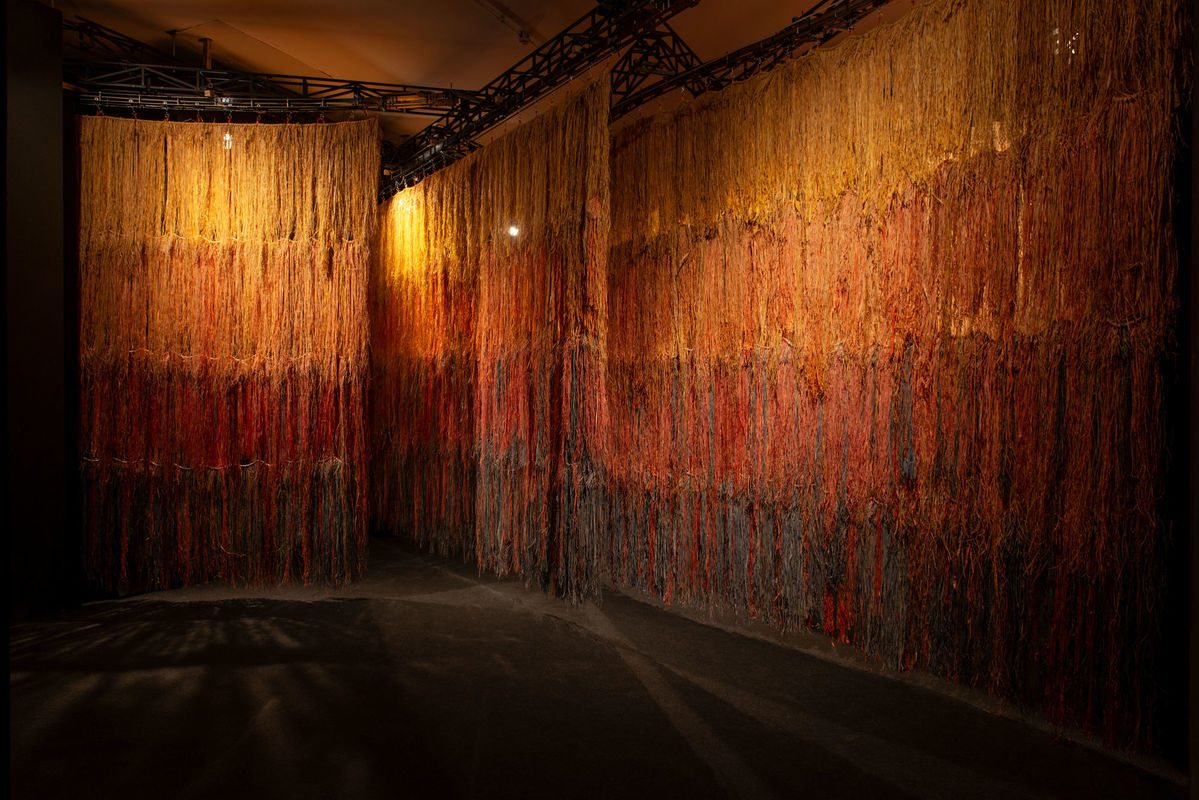
Diego Araúja & Laís Machado
“Quero me acabar no sumidô.” [I want to end myself in the drain.] ¹
This popular saying can be traced back to a verse of a vissungo ² recorded in 1929 in Minas Gerais, and probably chanted throughout the territory where there were exploited Black people. To disappear as an opportunity to embark on a temporality in which the lambá – the disgrace of enslaved labor and its centuries-long enchainment – is not the only destiny of Black life. Singing for a productive disappearance relates life and death not as oppositions, but as the possibility of living life otherwise. It is in the wake of this chant that Sumidouro n. 2 – Diáspora fantasma [Ghost Diaspora] refuses to surrender itself to the gaze that reveals everything. Betting on the formal opacity of a monumental architecture, the work connects to the ethical call of the collaborative work of Lais Machado and Diego Araúja by emerging as a platform and bringing together Afro-Atlantic artists. To be enchanted by Sumidouro n. 2 is the opportunity to be in the presence of works which, opposed to the colonial forces of disappearance, have never ceased to be realized in experimentations and languages of their own.
As in other visual art pieces by Araúja and Machado, this work retains scenic functions, this time in its scale, and in the spectatorial game played with straw, a material of liturgical, architectural, and handicraft purposes. Defined by the artists as an installation-performer, the phantasmagoria that is performed does not appear as a surrealist bid to reveal the unconscious, but rather as the possibility of dancing with all that which has been disappeared.
In movement, Sumidouro n. 2 promotes dis/appearances; what is to come is revealed in fragments, the housed works are offered to an integral and rhythmic, but not totalizing, apprehension. It is possible to just contemplate it, but to be in Sumidouro n. 2, a whole body with the qualities of alarinjo presence is required – which, in Yoruba, means a body that sings and dances while walking, implicated in the desire to re/un/know. ³ It is a sinuous platform in which the collective pact, the intentionality of the rite, and the desire to intervene in the dynamics of disappearance stand out.
Cíntia Guedes
translated from Portuguese by philip somervell
Diego Araúja (Salvador, BA, Brazil, 1986. Lives in Salvador) produces art in an expanded manner. He uses a variety of media including literature, visuals, scenic, and cinematographics and works as director, playwright, screenwriter and visual artist. Since 2013 he has directed the process Estética para um não-tempo. In 2017, together with the artist Laís Machado, he founded the ÀRÀKÁ Platform. In 2018, he did an art residency at the Atlantic Center For The Arts (New Smyrna Beach, FL, USA), where he created the video installation Oríkì das Araújas, where he experiments with synthetic sound vibrations in oríkì’s. In 2020, he did an art residency at SAVVY Contemporary (Berlin, Germany).
Laís Machado (Salvador, BA, Brazil, 1990. Lives in Salvador) is a transdisciplinary artist, alárìnjó, feminist and researcher. Together with artist Diego Araúja she founded ÀRÀKÁ – A transdisciplinary platform for art creation, research, training networks, and exchange between black artists. Her research focuses on trance and flow as a starting point for creating presences in performances, as well as a decolonial study of the contemporary experimental scene. She is the creator, artistic director and coordinator of the Obìnrín Forum, an artistic residency for black female transdisciplinary artists from Latin America in Salvador, Bahia.
Currently, the duo of artists is involved in founding the Laboratório Internacional de Crioulo, a project that proposes to articulate bridges between people from Afro-diasporic countries to create a language not born from trauma, but rather developed from corporal experiments and collective actions.
1. “Ei ê lambá / quero me acabá no sumidô / quero me acabá no sumidô / lamba de vinte dia / ei lambá / quero me acabar no sumidô / Ei ererê.” Vissungo documented in 1929 by the philologist and linguist Aires da Mata Machado Filho (1909–-1985), in a study of the Bantu repertoire in Diamantina (MG), was re(en)chanted by the singer and composer Geraldo Filme (1927–-1995) in the album O canto dos escravos [the song of the slaves], by Geraldo, Clementina de Jesus and Tia Doca, Eldorado Studio, 1982.
2. Chant intoned by black slaves in the diamond fields of Diamantina (MG) with words in Portuguese and African languages. [E.N.]
3. Alarinjo is also a term used by Lais Machado to define her performing arts practice.
- Vista de SUMIDOURO n. 2 — diáspora fantasma, de Diego Araúja e Laís Machado durante a 35ª Bienal de São Paulo – coreografias do impossível © Levi Fanan / Fundação Bienal de São Paulo
- Vista de SUMIDOURO n. 2 — diáspora fantasma, de Diego Araúja e Laís Machado durante a 35ª Bienal de São Paulo – coreografias do impossível © Levi Fanan / Fundação Bienal de São Paulo
- Vista de SUMIDOURO n. 2 — diáspora fantasma, de Diego Araúja e Laís Machado durante a 35ª Bienal de São Paulo – coreografias do impossível © Levi Fanan / Fundação Bienal de São Paulo
- Vista de SUMIDOURO n. 2 — diáspora fantasma, de Diego Araúja e Laís Machado durante a 35ª Bienal de São Paulo – coreografias do impossível © Levi Fanan / Fundação Bienal de São Paulo

 Português
Português